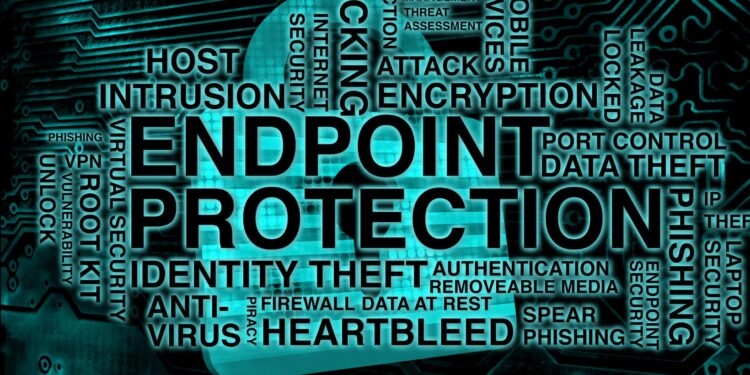With the recent pandemic greatly accelerating the move to digital services, the importance of protecting digital borders has become paramount. There are many facets to national security, but it always starts with endpoint protection. As cyber threats continue to evolve, understanding the fundamentals of endpoint security becomes essential for protecting our nation’s critical assets.
In this write-up, you will gain insights into endpoint protection, its relevance to national security, and tips for doing endpoint security right. Government agencies at all levels must prioritize cyber security solutions for local government to safeguard critical infrastructure and sensitive data from evolving threats. Before diving into implementation strategies, let’s first explore what endpoint protection entails and why it forms the foundation of national cybersecurity efforts.
Understanding Endpoint Protection
Endpoint protection can be defined as the protection of computers, smartphones, and tablets connected to a network. The endpoints can be a place where malicious data can be injected into the system, thus making it a target for potential threats. Unauthorized access to the network is prevented when smart devices are guaranteed security.
Why Endpoint Protection Matters
The significance of endpoint protection extends across multiple dimensions of national security, each playing a vital role in maintaining our country’s digital defense.
Protecting Sensitive Information
Government agencies and national institutions process sensitive data. Such information includes citizens’ personal data and secret government operations. If this data falls into the wrong hands, it could lead to anything from identity theft to threats to national security. Protecting these devices lowers the likelihood of data breaches.
Preventing Cyberattacks
Cyberattacks are becoming increasingly sophisticated, and perpetrators continually find new means of breaching systems. Organizations can stop these attacks by hardening the endpoint. Effective protection measures prevent bad actors from reaching and exploiting vulnerabilities, ensuring that critical systems remain secure.
Enhancing Operational Efficiency
Compromised devices can halt operations and lead to significant downtime. According to IBM’s Cost of a Data Breach Report, such interruptions are both expensive and destructive, especially for national security operations that must remain vigilant. Endpoint protection solutions help keep operations running smoothly without unnecessary disruptions.
Implementing Effective Endpoint Protection

Understanding the importance of endpoint protection is only the first step; organizations must also adopt practical measures to secure their systems effectively.
Comprehensive Security Solutions
Strong endpoint protection requires a comprehensive suite of security solutions, including antivirus software, firewalls, and encryption tools. Together, these measures provide robust defense against potential threats and make it significantly more difficult for malicious actors to breach systems.
Regular Updates and Patching
Regular software updates are an essential part of security. Outdated software is an easy target for cybercriminals. Organizations can close security gaps and protect against emerging threats by regularly updating and patching software. This ensures that every device remains secure at all times.
Employee Training and Awareness
Security breaches are often due to human error. Employees must be aware of risks and trained to identify and report suspicious behavior. Frequent training can increase awareness and decrease the risk of accidental data exposure. An informed team is a core component of any security approach.
Government Role and Policy
While individual organizations bear responsibility for their own security, government leadership and policy frameworks are essential for creating a unified national defense strategy.
Establishing Standards and Regulations
The government plays a crucial role in defining security standards and regulations. These guidelines ensure that all organizations take the required protective measures. By committing to clear policies, we can enforce mandatory compliance and foster a culture of security across all sectors.
Fostering Collaboration and Information Sharing
Collaboration is the crucial linchpin in battling cyber threats: government agencies, the private sector, and international partners must work together. By sharing intelligence about potential threats and software vulnerabilities, everyone’s security operations improve. This unified approach ensures a more coordinated response and holistically reinforces national security.
Future Trends in Endpoint Protection
As we look ahead, several emerging trends are reshaping the landscape of endpoint security and offering new opportunities to strengthen our defenses.
Advancements in Technology
As technology advances, the tools available for endpoint protection also evolve. Security solutions are integrating artificial intelligence and machine learning, enabling more intelligent threat detection and response. These technologies can identify patterns and threats more quickly, adding an extra layer of protection.
Increased Focus on Mobile Security
As mobile device usage has increased, endpoint security for mobile devices has become crucial. Mobile devices hold sensitive information and are easily lost or stolen. Effective mobile security requires implementing security measures specifically designed for mobile technology.
Conclusion
Endpoint protection is the bedrock of national security. Organizations can prevent cyberattacks, secure sensitive information, and operate efficiently by keeping devices protected from external threats. Achieving effective endpoint protection requires comprehensive security solutions, regular updates, and employee education. Government intervention reinforces these efforts by establishing standards and encouraging collaboration. Staying ahead of potential threats through strong endpoint protection remains a fundamental national security priority as technology continues to evolve.



























































